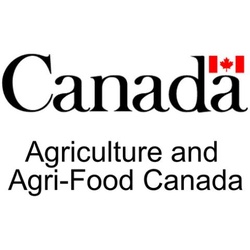
2 Billion Trees Program
At a glance
- No Condition
- Open Date : May 16, 2025
- Closing date : September 18, 2025
- Agriculture, forestry, fishing and hunting
- Canada
- Non-profit
- Public or Parapublic institution
- For-profit business
- All revenue ranges
- All organization sizes
- Indigenous Peoples
- Rural or Northern Residents
- Canadians
- Environment
- Economic, Social and Community Development
- General public
- Indigenous peoples
- Rural / Remote communities
- All structures
- Local
- Municipal
- Regional
- Provincial
- National
Overview
Submit a proposal to carry out a tree-planting project to help reduce green gas emissions, capture carbon, enhance biodiversity and support human well-being through long-term planting work, small-scale planting and urban/suburban projects.
Activities funded
The 2 Billion Trees Program supports a variety of tree planting initiatives across Canada, aimed at contributing to climate change mitigation and enhancing biodiversity. Eligible activities focus on afforestation and reforestation efforts, as well as specific restoration projects.
- Tree planting on both public and private lands, including remote, rural, suburban, and urban areas.
- Afforestation projects on lands that currently do not have trees, such as abandoned lands.
- Reforestation projects to regenerate forests that have temporarily lost tree cover due to natural or commercial disturbances.
- Restoration of forest habitat under recovery strategies for species at risk and conservation agreements.
Eligibility
Eligibility for the 2 Billion Trees (2BT) program requires compliance with specific criteria related to the applicant's type and proposed activities.
- The applicant must be a provincial or territorial government, third-party organization (for-profit or not-for-profit), or Indigenous organization.
- The project must involve planting trees via afforestation or reforestation on public or private lands in Canada and comply with applicable laws.
- The planting activities must not occur on lands with unique habitats, such as native grasslands.
- The project should not address legal obligations to regenerate forests after commercial activities like harvesting or replace existing secured funding.
- Projects for regenerating forests on private lands as part of standard commercial forestry activities are ineligible.
Who is eligible?
The 2 Billion Trees (2BT) program is open to a wide range of applicants, including:- Provincial and territorial governments interested in participating must directly contact the 2BT program team.- Third-party organizations, both for-profit and not-for-profit, that are involved in tree planting efforts across Canada.- Indigenous governments, communities, and organizations looking to engage in tree planting or capacity building projects under a dedicated Indigenous Funding Stream.- Local governments and organizations focusing on urban tree planting can apply through the Federation of Canadian Municipalities’ Growing Canada’s Community Canopies initiative.These various streams ensure a comprehensive approach by including diverse stakeholders in the tree planting initiatives, which contribute to Canada’s environmental goals.Who is not eligible
This grant excludes certain projects that do not align with the program's goals or duplicate existing efforts. Restrictions ensure the funding supports new and impactful tree planting initiatives.
- Projects on native grassland ecosystems or other unique habitats.
- Projects that fulfill legal reforestation obligations under sustainable forest management regimes.
- Projects with secured alternative funding sources.
- Projects on private lands aimed at standard commercial forestry activities.
Eligible expenses
This grant supports tree planting initiatives across Canada aimed at reforestation and afforestation. These activities are designed to combat climate change, restore habitats, and provide ecological benefits.
- Tree planting on public and private lands across Canada.
- Afforestation on lands that currently do not have trees, such as abandoned lands.
- Reforestation in areas that have temporarily lost tree cover due to natural or commercial disturbances.
- Restoration of forest habitats, including under recovery strategies for species at risk and conservation agreements.
Eligible geographic areas
This grant supports tree planting across various geographical areas in Canada, aligning with regional environmental goals. Eligible locations encompass diverse settings to enhance forest coverage and ecological benefits.
- Public and private lands across Canada.
- Remote, rural, suburban, and urban areas.
- Areas suitable for afforestation, including abandoned lands.
- Regions in need of reforestation due to natural or commercial disturbances.
- Sites for habitat restoration as part of recovery strategies for species at risk.
Selection criteria
Yes, there are evaluation and selection criteria for this grant. The proposals are assessed based on their alignment with program objectives and their projected impact on the environment and community.
- Alignment with program objectives
- Potential environmental benefits
- Potential social, cultural, and economic benefits
- Feasibility and sustainability of the project
- Compliance with provincial, territorial and federal laws
- Monitoring and reporting mechanisms to ensure survival of the trees
How to apply
Eligibility Assessment
- Visit the 2 Billion Trees program website to assess your eligibility.
- Complete the online eligibility assessment provided on the website.
Proposal Preparation
- Prepare a detailed tree planting project proposal including objectives, scope, and expected outcomes.
- Ensure that the proposal complies with provincial, territorial, and federal laws related to forest management.
- Gather necessary supporting documents such as financial statements and previous project reports if applicable.
Application Submission
- If eligible, click the "Apply now" button on the 2BT program website to begin your application.
- Fill out the application form with accurate and complete information.
- Upload all required documents and ensure that they are properly labeled.
- Review the application for any errors or omissions before submitting.
Confirmation
- Receive confirmation of submission from the 2BT program via email.
- Keep the confirmation email for your records, which includes your application number for future reference.
Additional information
Here are additional relevant details for this grant:
- The program supports projects that comply with provincial, territorial, and federal laws.
- The initiative aims to help Canada exceed its 2030 Paris Agreement greenhouse gases emissions reduction target.
- Focus is on planting the right trees in the right places to maximize long-term benefits.
- Projects should not be aimed at fulfilling legal obligations of forest regeneration.
- The funding aims to supplement rather than replace existing funding sources.
Frequently Asked Questions about the 2 Billion Trees Program Program
What is the 2 Billion Trees Program?
How much funding can be received?
What expenses are eligible under 2 Billion Trees Program?
What is the deadline to apply?
Is the 2 Billion Trees Program a grant, loan, or tax credit?
Who are the financial supporters of the 2 Billion Trees Program?
Who is eligible for the 2 Billion Trees Program program?
Who can I contact for more information about the 2 Billion Trees Program?
Where is the 2 Billion Trees Program available?
Are Indigenous Peoples eligible for the 2 Billion Trees Program program?
More programs like this

AgriScience Program – Clusters
Agriculture and Agri-Food Canada (AAFC)
ISED — Artificial intelligence (AI)
Innovation, Science and Economic Development Canada (ISED)
AgriCompetitiveness Program
Agriculture and Agri-Food Canada (AAFC)
Canada Pavilion Program
Agriculture and Agri-Food Canada (AAFC)
Farm Equipment Financing
Farm Credit Canada (FCC)
Women Entrepreneur Program
Farm Credit Canada (FCC)
AgriAssurance Program – National Industry Association Component
Agriculture and Agri-Food Canada (AAFC)
African Swine Fever Industry Preparedness Program (ASFIPP) - Welfare Slaughter and Disposal Stream
Agriculture and Agri-Food Canada (AAFC)
AgriRisk Initiatives - Research and Development Contribution Funding
Agriculture and Agri-Food Canada (AAFC)